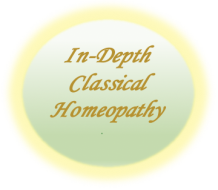Homeopathy, Healing, and Transformation
Jane Tara Cicchetti, RSHom, (NA), CCH
Healing and transformation play an essential role in human evolution. This process is so significant that many symbols have emerged that relate to it. Often depicted as a series of images, they show the stages through which the initiate must pass in order to manifest a life altering change. These symbols appear in many traditions, including woodcuts from alchemists around the world, and in many eastern and western spiritual traditions.
A Zen series, known as the Ox Herding Pictures, shows the journey of transformation from the first search for the path to returning to the world as a transformed being. The Rosarium pictures, from western alchemy, portray the steps of transmutation of both physical substance and the state of the alchemist.
This transmigration occurs during many deep healing and transformative processes and is particularly relevant to the healing that occurs under homeopathic treatment. The relationship to homeopathy is the subject of this article so it would be helpful to begin with a very brief history of this healing art.
Over 200 years ago, a German physician was faced with a dilemma. For all his medical training, he could not help his family recover from the illnesses they contracted. The medicines of his day caused more harm than good and he was unwilling to hurt his family or any of his patients in the name of medicine. This physician, Samuel Hahnemann, went on to discover an effective and completely non-toxic form of medicine that he called homeopathy.
Homeopathy was and is a radical discovery, not only because of the process by which its remedies are prepared (extremely dilute, so called dynamic preparations), but also because homeopathic philosophy recognizes the relationship between the mind, body and spirit. Disease is not seen as separate from the whole person. The practitioner of this art must develop the skill to comprehend the circumstance of the individual in as near to its entirety as possible.
Hahnemann wrote that it is the homeopath’s responsibility to perceive what needs to be healed in the whole person. 1 Therefore, the practitioner of this healing art must be able to recognize a pattern within symptoms exhibited by the patient that indicates the energetic disturbance preventing the individual from living in full health. Once this pattern is observed, it is matched to a remedy that that can create a similar energetic disturbance. This similar remedy, or simillimum, stimulates the organism into a healing process on the mental, emotional, and physical levels.
The simillimum provides the stimulus for a process that begins to unfold in an organic way. It is not a mere elimination of symptoms, but a multidimensional realignment of the organism leading to transformation of the mind, body, and emotions. While homeopathy does not make a change in the transcendental or spiritual make up, it allows for greater access to this dimension. This is addressed in the philosophy underlying homeopathy.
In his Organon of Medicine, Hahnemann defined the underlying life force as that which enlivens the body. In health, he says, it allows the organism to use this instrument (the body) for the higher purpose of our existence.2 This statement is interesting because what is meant by the higher purpose of our existence is not defined. The idea becomes even more meaningful because it remains open.
The experienced homeopathic practitioner who follows Hahnemann’s guidelines knows that an increased level of mental clarity and emotional satisfaction must accompany the mere disappearance of symptoms if the treatment is to proceed to cure. But how the individual expresses and creates from this state is a unique experience.
Everyone has his or her own deepest desires and inclinations. In health, they will use their mental abilities, emotional qualities, and training in their own way. This can manifest in the creative arts, in parenting a child, or achieving a particular spiritual goal. There are infinite possibilities. What is important is that the individual is able to express and fulfill his or her deepest and purest impulses for their own benefit and for the benefit of others. Consideration for others cannot be overlooked in evaluating the health of an individual. It is possible for someone to develop abilities for her own benefit alone at the expense of others. An example would be someone who is a very clever thief or in some other way uses his power to harm others. This is not health. The important factor of love and consideration is missing; a grave omission.
Another vital dimension in the process of healing is the acceptance that life has its ebbs and flows, its joys and sorrows. A healthy individual becomes more resilient and adaptable and is not only able to deal with difficulties but to grow from them. His or her actions are more frequently led from a place of centeredness and clear thinking, rather than impulsively springing from fears, addictions, and previously ingrained negative reactions. Thus, in health, there is a deepening enrichment of oneself as a human being.
The correct homeopathic remedy provides the stimulus, but once the healing process has begun, only time and contact with the challenges of living will create this depth of healing.
1Samuel Hahnemann, Organon of the Medical Art, ed. Wenda B. O’Reilly (Redmond, Washington: Birdcage Books, 1996), 62.
2 Ibid., 65.

